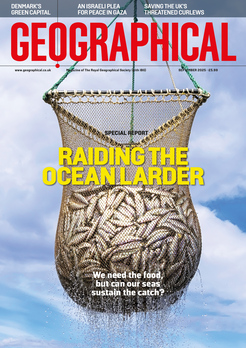
Tens of millions of people are still drinking arsenic-contaminated water 30 years after ‘the greatest mass poisoning in history’
By
In 1982, Kshitish Chandra Saha, a dermatologist at the School of Tropical Medicine in Kolkata, India, was treating two patients suffering from black skin lesions. At first, Saha suspected leprosy, which afflicted a large proportion of the country’s population at the time. But he later gave a different explanation: arsenicosis – arsenic poisoning. His diagnosis paved the way to the discovery of extensive arsenic contamination in West Bengal’s groundwater, later described by the World Health Organisation (WHO) as the ‘greatest mass poisoning in human history’.
Related reads:
Three decades later, an estimated 90 million people in India and another 40 million in Bangladesh are still consuming drinking water contaminated with high concentrations of arsenic. In that time, the situation has remained largely unaddressed, with some reports suggesting that the problem may have become worse.
In Assam, a state in northeastern India, arsenic was first found in the heavily extracted groundwater in 2004. The metallic element occurs naturally across the Brahmaputra floodplains, where the river carries it down from the Himalayas.
Scientists estimate that groundwater concentrations are higher than 50 micrograms per litre in 20 of the 30 districts of Assam (the WHO has set a limit of ten micrograms per litre for drinking water). ‘We are talking about millions of people who are affected, all within the remote foothills of the Himalayas,’ says Jagannath Biswakarma, an environmental scientist at the University of Bristol.

Arsenic decontamination doesn’t require sophisticated technology, explains Biswakarma. Simple filters that use sand and iron nails can eliminate it from the water. But in remote regions, home to poor communities, these kinds of filters are difficult to distribute. A lack of resources has also prevented the comprehensive blanket testing of arsenic in Assam’s groundwater, making mapping its spatial extent a significant challenge.
However, thanks to work by Biswakarma and his colleagues at the university, scientists now have a better understanding of where and how the different types of arsenic are formed.
In environmental settings, arsenic primarily exists in two oxidation states, arsenite (As III) and arsenate (As V), a discovery first made by Biswakarma’s mentor, US biogeochemist Janet Hering, in 2003. ‘Once we knew that, people started treating different types of arsenic-contaminated water differently,’ he says. ‘It’s not a one-shoe- fits-all treatment, you know, so it’s very important that proper screening of the area comes first, before prescribing a treatment.’ This research opens the door for developing new strategies to mitigate arsenic pollution, including giving scientists a better understanding of its geographical distribution.
The WHO classifies arsenic as carcinogenic to humans and lists various forms of cancer, skin lesions, cardiovascular ailments and diabetes as diseases caused by long-term exposure to the deadly element. ‘I have seen firsthand how people struggle to get safe water on a day-to-day basis,’ says Biswakarma, who is originally from Assam. ‘I think that’s why I chose my studies in the field of environmental sciences – it was a very conscious decision that I wanted to do something about it.’
This month, Biswakarma returns to Assam for a large-scale field trip to collect data on soil microbes and other factors that could help the team to better recommend treatment and policy changes. His research could also help communities in other parts of the world with polluted groundwater.
While arsenic contamination is most severe in Southeast Asia, this natural component of the Earth’s crust is widely distributed throughout our planet’s air, water and land. More than 70 countries around the world have documented arsenic in their drinking water sources, affecting some 500 million people in countries with dangerously high levels, such as China, Argentina, Chile, Mexico and the USA.
‘About 44 million people in the lower 48 states use water from domestic wells,’ says Joe Ayotte, a USGS hydrologist and lead author of a recent study of arsenic concentrations across the USA.




